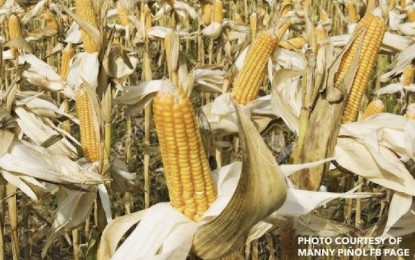
CEBU CITY – The provincial government here is bent on boosting the production of corn and cassava as part of the capitol’s Enhanced Countryside Development (ECD) program.
Governor Gwen Garcia met with representatives of planters associations and financing institutions on Tuesday to discuss the program.
During the meeting, corn and cassava have been identified as the top crops to kickstart the program aimed at improving production and filling the supply gap in achieving self-sufficiency.
ECD primarily encourages more investment to reinvigorate countryside farming and agribusiness. This will push more residents in the province to work where they live and not troop to the urban centers for employment opportunities.
Garcia said the pandemic showed how insufficient the supply of corn is even in Cebu province which is known for its mass production of corn.
Land areas in San Remigio switched to planting cassava covered 6.5 hectares; 130 hectares to cassava and 20 hectares to hybrid yellow corn in Bogo City; 15 hectares to cassava and 106 hectares to yellow corn in Medellin; and 258 hectares to cassava, hybrid yellow corn and other crops in Daanbantayan.
Dr. Roldan Saragena, provincial agriculturist, said the areas are from sugarcane planters who converted to planting other crops, such as yellow corn and cassava.
He said they brought their produce to the Sagay Sugar Mill in Negros Occidental for food processing.
“The challenge of exploring other crops is if the endeavor is profitable,” Saragena said in a statement released by the provincial capitol’s public information office.
He said opportunities under the program are on production of hybrid yellow corn and cassava, improved white corn and native pig, as well as fishery and rice hybridization.
According to the 11 feed millers in Cebu, the projected demand for yellow corn is at 469,200 metric tons and currently, the production is short of 467,100 metric tons.
Saragena said the deficiency can be addressed by having an additional harvest area of 93,420 hectares.
Through his presentation on “Yellow Corn Cost and Return Analysis per Hectare,” it was learned that total production costs PHP48,595. The estimated sales at 5,000 kilograms per hectare sold at PHP14.50 per kilogram yields PHP72,500 or a net income of PHP23,905 — a 49.19-percent return of investment (ROI).
There are at least 11 processors and feed millers in Cebu that are interested to tap the produce from corn and cassava farmers.
Saragena said the total production cost for fresh cassava is at PHP49,710 per hectare with estimated sales of PHP105,000 or a net income of PHP55,290.
A kilo of cassava is sold at PHP3.50, therefore 30,000 kilos yield per hectare sells at PHP105,000. This posts a 111.23-percent-high ROI which makes cassava production a viable enterprise.
Meanwhile, total production cost for chipped and dried cassava is at PHP55,910. An estimated sales of PHP148,200 based on selling price of PHP13 per kilo renders a net income of PHP92,290, or an even higher ROI at 165 percent.
Saragena further said that through the project, there is already a “sure market” for the harvested products.
The capitol will provide post-harvest facilities, collaborate with local government units in providing the needed technical assistance, and facilitate crop insurance to participating farmers.
“The pandemic showed us that Cebu is not self-sufficient. We had to scramble for rice. Commercial rice which was sold at PHP1,500 per sack went to as high as PHP2,500 per sack. We can hardly meet the need not just for white corn but also for yellow corn for our feed mills,” Garcia said.
She said other supplies still come from Mindanao and other countries. (PNA)
